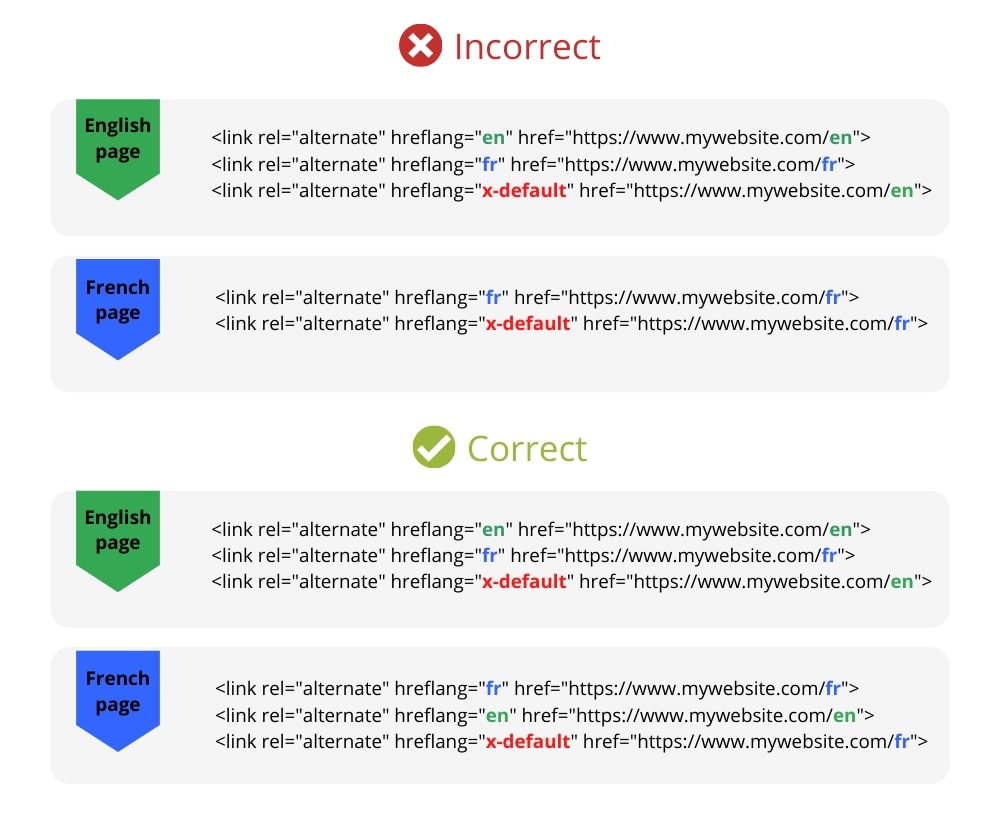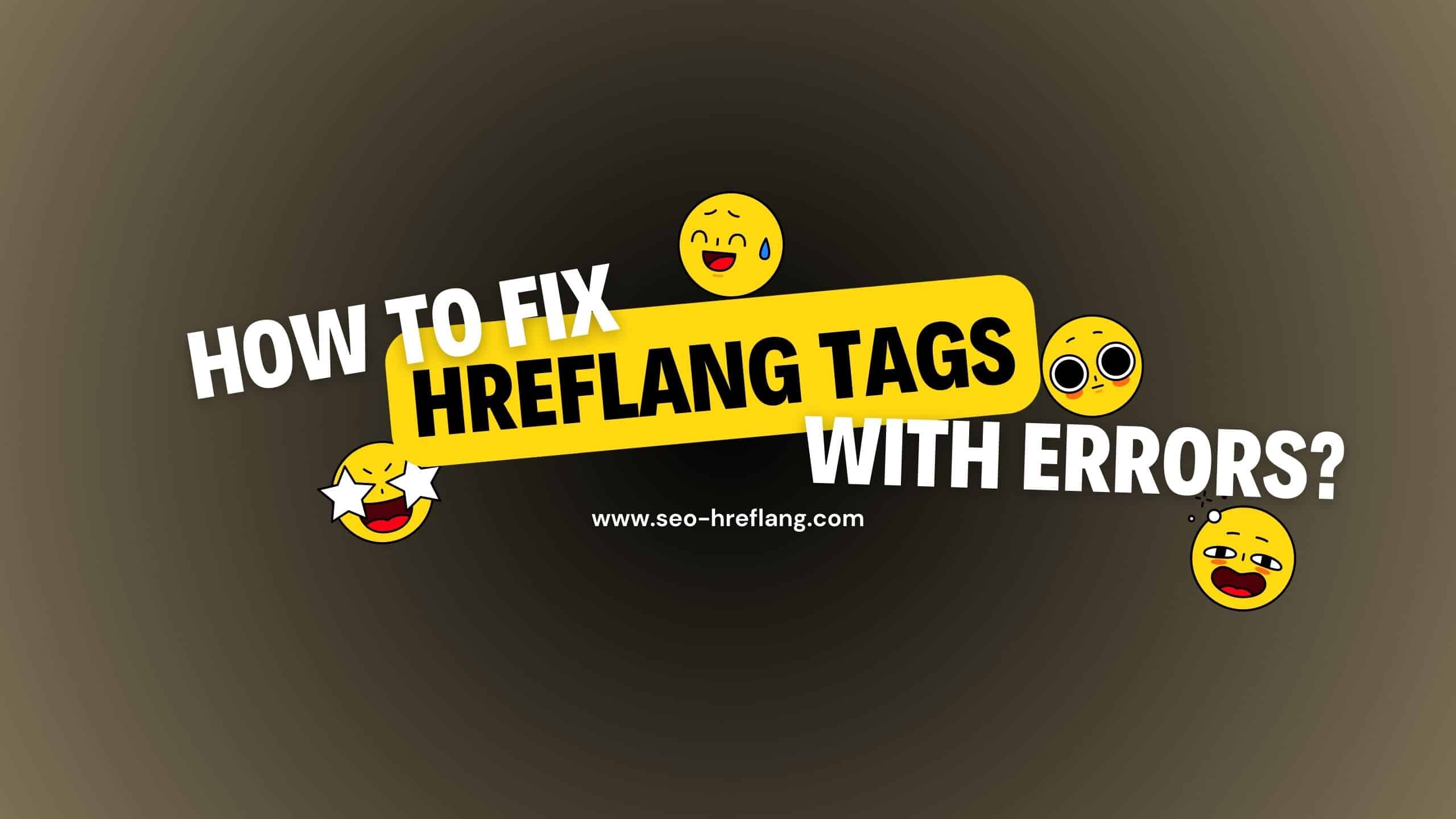Fix Hreflang Tags with Errors are an essential element in optimizing international and multilingual websites. They play a crucial role in telling search engines which language versions of a page should be shown to users based on their location and language preferences. Correctly implemented hreflang tags can improve search engine rankings and enhance the user experience by providing relevant content to the right audience.
However, improper implementation of hreflang tags can lead to errors and confusion for search engines, potentially resulting in a negative impact on organic traffic and site visibility. This comprehensive guide aims to equip you with the knowledge and tools needed to identify and fix hreflang tag errors effectively, ensuring your website can reach its full international potential.
1. Understanding Hreflang Tags:
1.1 What are Hreflang Tags?
Hreflang tags are HTML elements that indicate the language and geographical targeting of a web page. They provide information to search engines about alternate versions of the same content available in different languages or targeted at specific regions.
1.2 Why are Hreflang Tags Important?
Hreflang tags enable search engines to present the appropriate version of a page to users speaking different languages or residing in various countries, thus improving user experience and localization.
1.3 Hreflang Attributes Explained: Learn about the different attributes used in hreflang tags, including language codes, region codes, and x-default, and how they affect search engine interpretation.
1.4 The Impact of Incorrect Hreflang Tags: Explore the consequences of having erroneous or missing hreflang tags on your website, such as content duplication, poor user experience, and SEO challenges.
2. Common Hreflang Errors and Their Causes:
2.1 Missing Hreflang Tags: Discover the issues caused by not implementing hreflang tags on relevant pages and how to rectify this error.
2.2 Incorrect Language Codes: Understand the significance of accurate language codes and how incorrect codes can lead to misinterpretation by search engines.
2.3 Self-Referencing Hreflang Tags: Learn why self-referencing hreflang tags can cause errors and how to avoid them.
2.4 Circular Referencing: Explore the concept of circular referencing in hreflang tags and how to break such loops to ensure proper indexing.
2.5 Inconsistent Hreflang Tags: Identify the challenges arising from inconsistent hreflang implementations and how to bring consistency to your tags.
2.6 Hreflang Conflicts: Understand how conflicting hreflang signals can confuse search engines and users, and strategies to resolve them.
3. Tools and Techniques for Identifying Hreflang Errors:
3.1 Manual Review of Hreflang Tags: Learn how to manually inspect your website’s hreflang tags and spot potential errors.
3.2 Using Google Search Console: Utilize Google Search Console to identify hreflang errors and monitor the performance of your international pages.
3.3 Crawl and Audit Tools: Discover various tools that can crawl your site and highlight hreflang issues efficiently.
3.4 Working with Hreflang Checkers: Explore dedicated hreflang checking tools that can help validate and correct your tags.
4. Step-by-Step Guide to Fixing Hreflang Errors:
4.1 Create a Comprehensive Hreflang Map: Understand the importance of planning a complete hreflang map to cover all relevant pages and languages.
4.2 Implement Hreflang Tags on Pages: Learn how to add hreflang tags to your website’s HTML code correctly.
4.3 Targeting Multiple Regions: Explore the nuances of targeting multiple regions with hreflang tags and how to manage them effectively.
4.4 Addressing Language Code Errors: Correct language code errors to ensure accurate language targeting.
4.5 Correcting Self-Referencing and Circular Referencing: Implement solutions to resolve self-referencing and circular referencing issues.
4.6 Resolving Inconsistent Hreflang Tags: Implement strategies to bring consistency to your hreflang tags across different pages.
4.7 Handling Hreflang Conflicts: Understand how to deal with hreflang conflicts to provide clear signals to search engines.
5. Testing and Validating Hreflang Implementation:
5.1 Using Google Search Console for Validation: Learn how to use Google Search Console to validate your hreflang tags and identify potential errors.
5.2 Manual Testing and Inspection: Explore manual testing techniques to ensure accurate hreflang implementation.
5.3 Hreflang Testing Tools: Discover specialized tools designed to validate and test hreflang tags.

6. Best Practices for Hreflang Implementation:
6.1 Using x-default Hreflang: Learn about the x-default attribute and how it can improve user experience.
6.2 Handling Unlinked Translations: Find out how to handle pages that have no direct equivalent in another language.
6.3 Monitoring Hreflang Tags Over Time: Understand the importance of regular monitoring and maintenance of hreflang tags.
6.4 Coordinating with Other SEO Efforts: Integrate hreflang implementation with other SEO strategies for a holistic approach.
7. Advanced Hreflang Techniques:
7.1 Hreflang and XML Sitemaps: Explore how to incorporate hreflang tags in your XML sitemap for better indexing.
7.2 Dynamic Hreflang Implementation: Learn about dynamic hreflang tags and how they cater to varying user preferences.
7.3 Hreflang for Mobile-First Indexing: Understand the implications of mobile-first indexing and how to optimize hreflang for mobile users.
8. Troubleshooting Common Hreflang Challenges:
8.1 Hreflang and JavaScript-Rendered Pages: Address issues related to JavaScript-rendered pages and hreflang implementation.
8.2 Hreflang and Pagination: Learn how to handle hreflang tags for paginated content.
8.3 Hreflang for Non-Standard Language Variations: Discover solutions for websites with non-standard language variations or regional dialects.
9. Hreflang for E-commerce Websites:
9.1 Hreflang for Product Pages: Implement hreflang tags for e-commerce product pages.
9.2 Handling Product Variations: Explore strategies for managing product variations in different languages or regions.
9.3 International E-commerce SEO Best Practices: Understand best practices for SEO in an international e-commerce context.
10. Monitoring and Maintaining Hreflang Tags:
10.1 Regular Auditing of Hreflang Tags: Establish a routine to audit and update hreflang tags as needed.
10.2 Implementing Changes Safely: Learn how to make changes to hreflang tags safely and effectively.
10.3 Dealing with Algorithm Updates: Understand the impact of algorithm updates on hreflang implementation and how to adapt.
Ensuring accurate and error-free hreflang implementation is crucial for maximizing the reach and visibility of your website among international audiences. By following the comprehensive guide and best practices provided here, you can successfully fix hreflang tag errors, thereby enhancing your website’s SEO performance and providing a seamless user experience for global visitors.
Remember to regularly monitor and maintain hreflang tags to stay ahead of potential challenges and changes in search engine algorithms.





